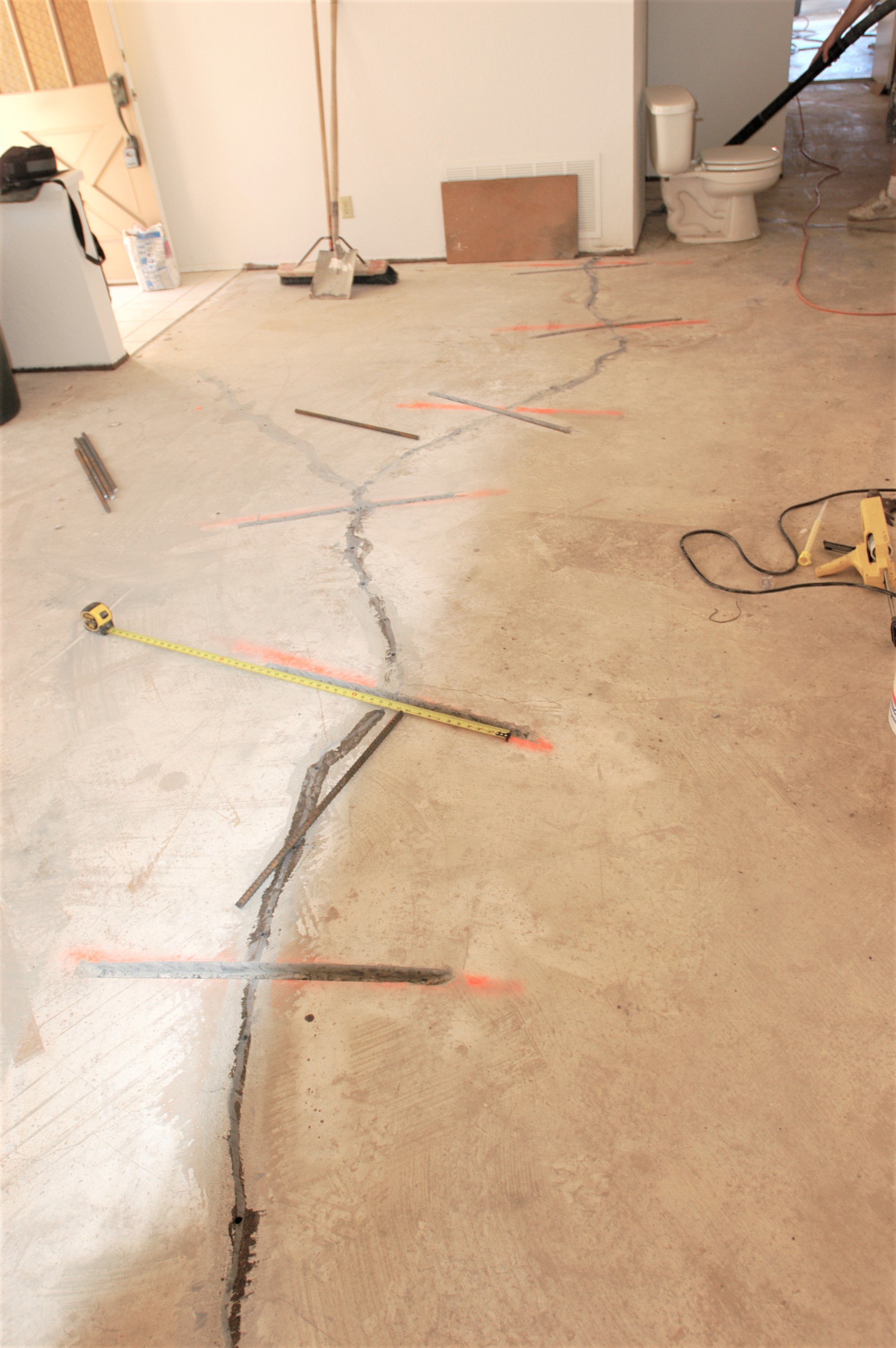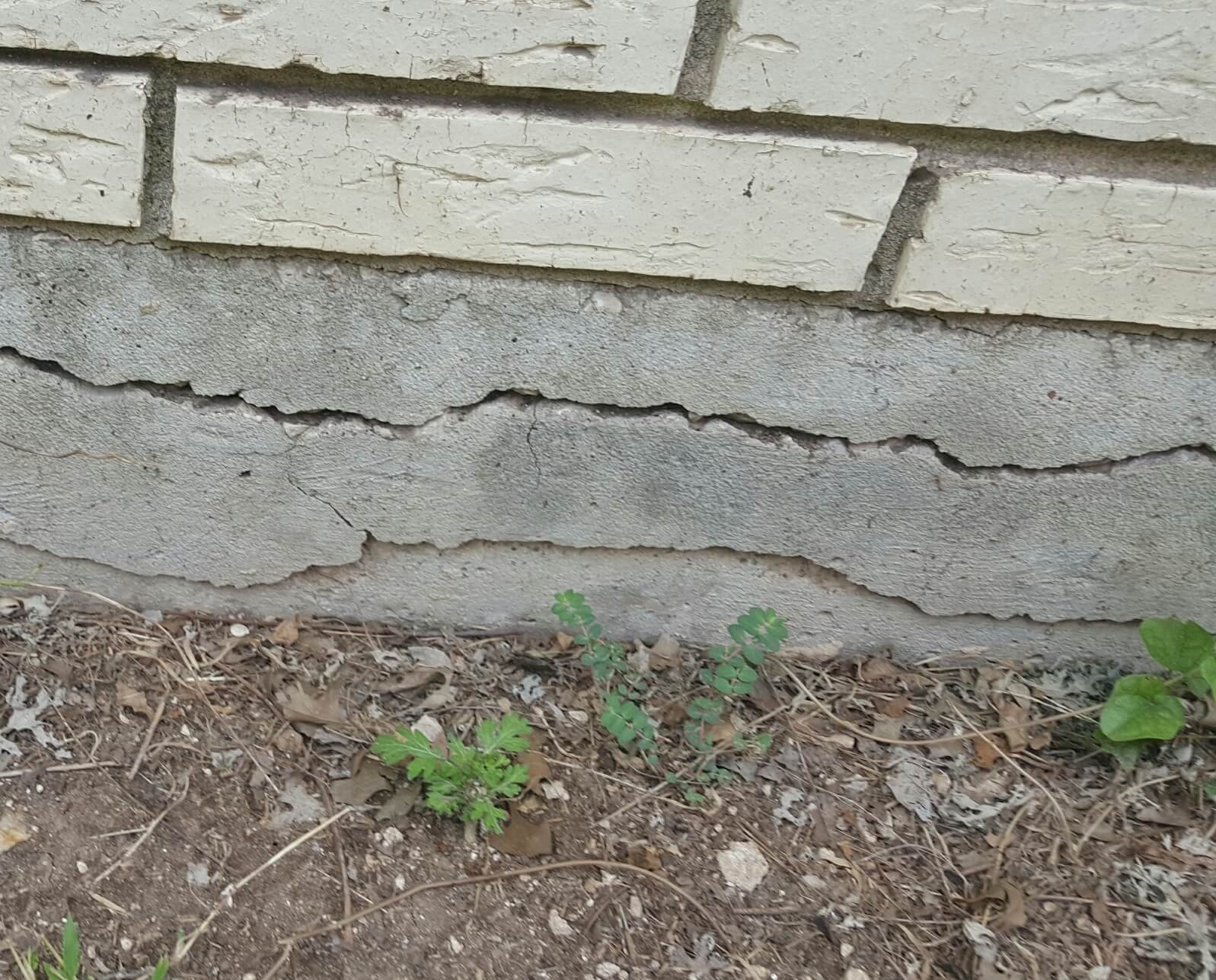- List of Slab Crack Repair Methods Articles Control Joint Cracks in Concrete - adding control joints may be necessary to reduce further slab cracking if the joints. SEAL CRACKS by POLYURETHANE FOAM INJECTION - non-structural cracks (often the case with poured floor slabs) may simply.
- Fill concrete cracks and joints without using Fill concrete cracks and joints without using a pro grade melter with the 1/4 in. Small Gray Crack-Stix Permanent Concrete Joint and Crack Filler. Originally used for federally specified highway jobs, this filler is an easy permanent solution for keeping concrete smooth. Crack-Stix is applied with heat (a simple hand held torch) and bonds to the sidewalls of the crack.
- They are caused when the surface moisture evaporates too quickly, usually during hot or windy weather. Synthetic fiber additives can help reduce this type of cracking, but do little once the concrete has cured. Drying shrinkage cracks. These occur as moisture leaves the concrete after the slab has hardened.
If your driveway, patio or other concrete surface has cracks, they can often be repaired. In some cases concrete crack repair can be a simple DIY project, in others it may require a professional concrete contractor to correct the damage and in the most extreme cases your concrete may need to be removed and replaced.
Choose your concrete repair product. Concrete surfaces cannot be repaired with concrete.
Find a concrete contractor near me.
Find crack repair products.
REPAIRING SMALL CRACKS
For minor cracking, here's how to fill cracks in concrete with a concrete patch or crack filler:
1. Chisel out the crack to create a backward-angled cut, using a cold chisel and a hammer.
2. Clean loose material from the crack using a wire brush, or a portable drill with a wire wheel attachment.
How To Patch Concrete Slab
3. Apply at thin layer of bonding adhesive to the entire repair area using a paint brush. The bonding adhesive helps keep the repair material from loosening or popping out of the crack.
4. Mix vinyl reinforced patching compound, and trowel it into the crack. 'Feather' the repair with a trowel, so it is even with the surrounding surface.
Wide crack variation
If the width of the crack is an inch wide or larger, the process of repairing cracks is slightly different. Chisel out the crack and clean loose material as listed above. Then pour sand into the crack within the surface. Prepare sand- mix concrete, adding a concrete fortifier, then trowel the mixture into the crack. Feather until even with the surrounding surface.
Tip: If you don't like the way your repairs look, consider concrete resurfacing for a fresh, uniform surface.

HOW TO TIPS FOR FIXING CRACKS
Repairing and resurfacing driveways: Step-by-step guide
Fill Cracks Between Concrete Slabs
IS IT WORTH FIXING, OR SHOULD IT BE REPLACED?
Concrete that is cracked only on the surface, or has hairline cracks where both sides of the crack are still level can be successfully fixed. See basics of concrete repair and troubleshooting
Cracked concrete should be replaced if due to the three conditions listed below. Any patching material used to fill these types of cracks will only be a short term fix. You definitely would not want to patch these cracks and then spend money resurfacing the concrete or doing a decorative topping.
Widespread, deep cracks, settlement has occurred
When concrete is cracked all the way through the slab it should be replaced. Sometimes this is due to the weight of large trucks, improper preparation of sub grade, erosion of sub grade, or other reasons.
- Remove the concrete
- Remove the sub grade
- Replace sub grade with compactable material (sometimes existing material is ok)
- Compact the sub grade
- Pour back concrete
Sunken concrete
Sunken concrete occurs when the sub grade was not prepared properly. Loose dirt may have been used for the sub grade. When this dirt settles-sometimes due to sprinkler or rain water going under the concrete- the concrete is unsupported and will be more susceptible to sinking.
It is possible that the sub grade was compacted and the concrete was subjected to extreme weight which caused the concrete to sink. This can often we fixed with special equipment that raises the concrete without damaging the slab (HMI Concrete Lifting & Raising Equipment).
Patch Cracks In Concrete Slabs

HOW TO TIPS FOR FIXING CRACKS
Repairing and resurfacing driveways: Step-by-step guide
Fill Cracks Between Concrete Slabs
IS IT WORTH FIXING, OR SHOULD IT BE REPLACED?
Concrete that is cracked only on the surface, or has hairline cracks where both sides of the crack are still level can be successfully fixed. See basics of concrete repair and troubleshooting
Cracked concrete should be replaced if due to the three conditions listed below. Any patching material used to fill these types of cracks will only be a short term fix. You definitely would not want to patch these cracks and then spend money resurfacing the concrete or doing a decorative topping.
Widespread, deep cracks, settlement has occurred
When concrete is cracked all the way through the slab it should be replaced. Sometimes this is due to the weight of large trucks, improper preparation of sub grade, erosion of sub grade, or other reasons.
- Remove the concrete
- Remove the sub grade
- Replace sub grade with compactable material (sometimes existing material is ok)
- Compact the sub grade
- Pour back concrete
Sunken concrete
Sunken concrete occurs when the sub grade was not prepared properly. Loose dirt may have been used for the sub grade. When this dirt settles-sometimes due to sprinkler or rain water going under the concrete- the concrete is unsupported and will be more susceptible to sinking.
It is possible that the sub grade was compacted and the concrete was subjected to extreme weight which caused the concrete to sink. This can often we fixed with special equipment that raises the concrete without damaging the slab (HMI Concrete Lifting & Raising Equipment).
Patch Cracks In Concrete Slabs
Seal Cracks Between Concrete Slabs
- Remove the concrete
- Remove the sub grade
- Replace sub grade with compactable material (sometimes existing material is ok)
- Compact the sub grade
- Pour back concrete
Frost Heave
Frost heave is very common in cold climates. Moisture in the ground freezes and the concrete pushes upward.
- Remove the concrete
- Remove the sub grade
- Replace sub grade with compactable material (sometimes existing material is ok)
- Compact the sub grade
- Pour back concrete
Patch Cracks In Concrete Slab
Get the advice of a local soils engineer on sub grade preparation for your area and material needed to prepare sub grade (sometimes existing material is ok)
Whether you do the job yourself or contract it done-these are the steps to follow. See what is concrete and ordering concrete for information on ordering the right type of concrete
Repairing Cracked Cement Floor Slab
Other Resources:
